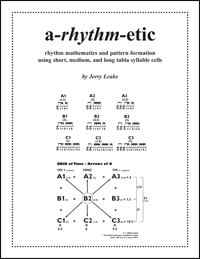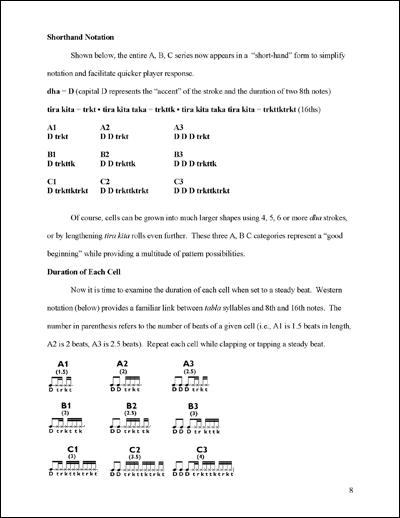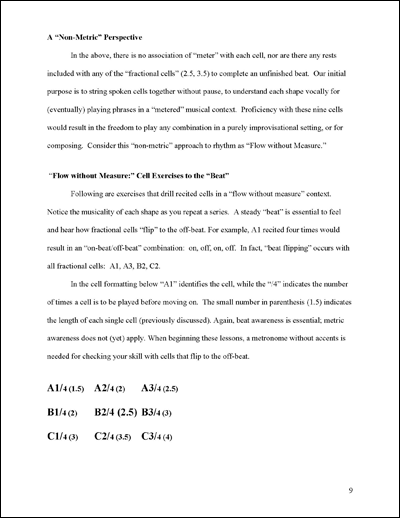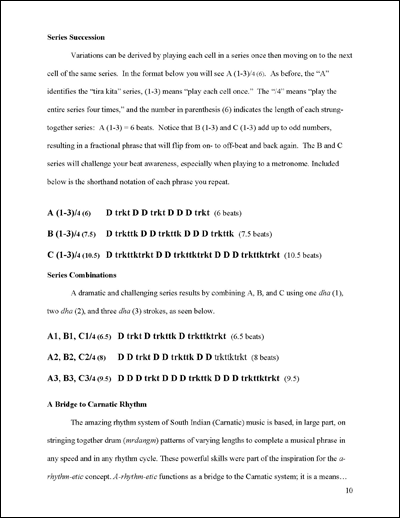| INTRODUCTION |
3 |
| RHYTHM CELLS |
|
| Speaking the Bols Clearly |
5 |
| Shorthand Notation |
5 |
| Duration of Each Cell |
6 |
| A "Non-Metric" Perspective |
7 |
| "Flow without Measure:" Cell Exercises to the "Beat" |
7 |
| Series Succession |
8 |
| Series Combinations |
8 |
| A Bridge to Carnatic Rhythm |
9 |
| GRID OF TIME |
9 |
| Arrows of 8 |
10 |
| Other 8-beat Combinations |
12 |
| Duplicating Numbers to Equal 8 |
13 |
| MATH AND COUNTING THEORY |
|
| The Abacus of Time in Indian Music |
14 |
| Number Locations |
15 |
| What Happened to "0"? |
16 – 17 |
| YIN & YANG LETTER PAIRS |
18 |
| REFLECTION AND TIME OUT |
20 |
| Stages of Development |
21 |
| BUILDING METRIC STRUCTURES |
21 |
| Meters in 5 |
22 |
| Meters in 6 |
23 – 24 |
| Meters in 7 |
25 – 27 |
| Meters in 9 |
28 – 29 |
| Meters in 10 |
30 – 31 |
| Meters in 11 |
32 |
| Process vs. Product |
34 |
| CELL INVERSION |
35 |
| Assimilation |
36 |
| Practical Examples |
37 |
| "HARMONIC TIME" |
37 |
| Stepping to Any Phrase or Meter |
38 – 39 |
| Off-Beat Clap |
40 – 41 |
| APPLICATION OF A-RHYTHM-ETIC |
|
| Theory vs. Practice |
42 |
| Tabla "Rela" Built Using Familiar Cells |
43 – 48 |
| CONCLUSION |
49 – 51 |
| BIBLIOGRAPHY |
52 – 54 |




